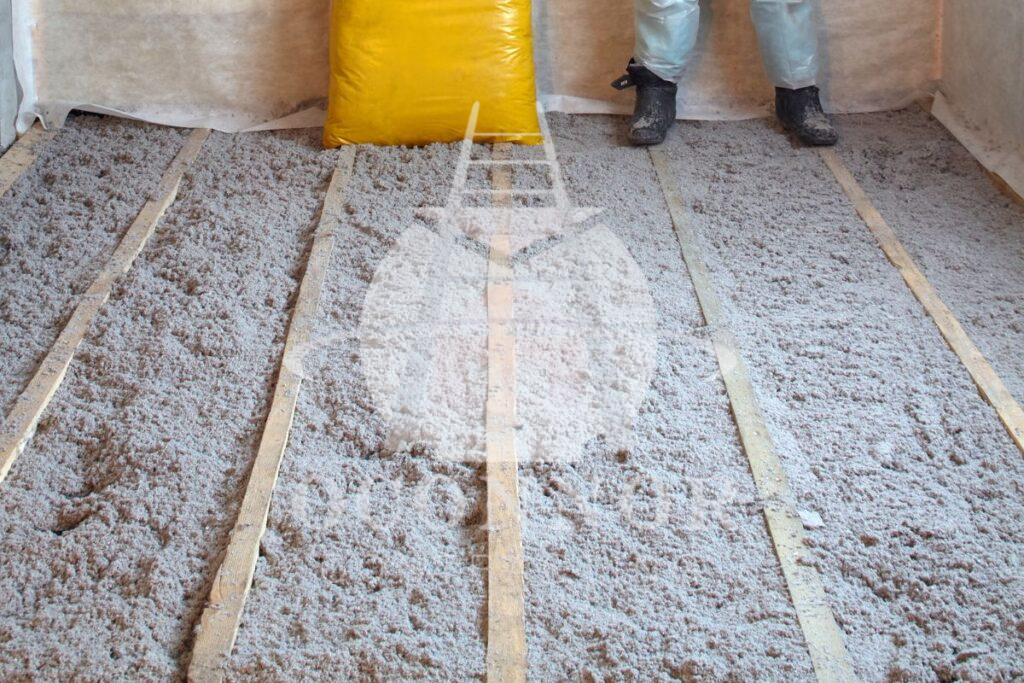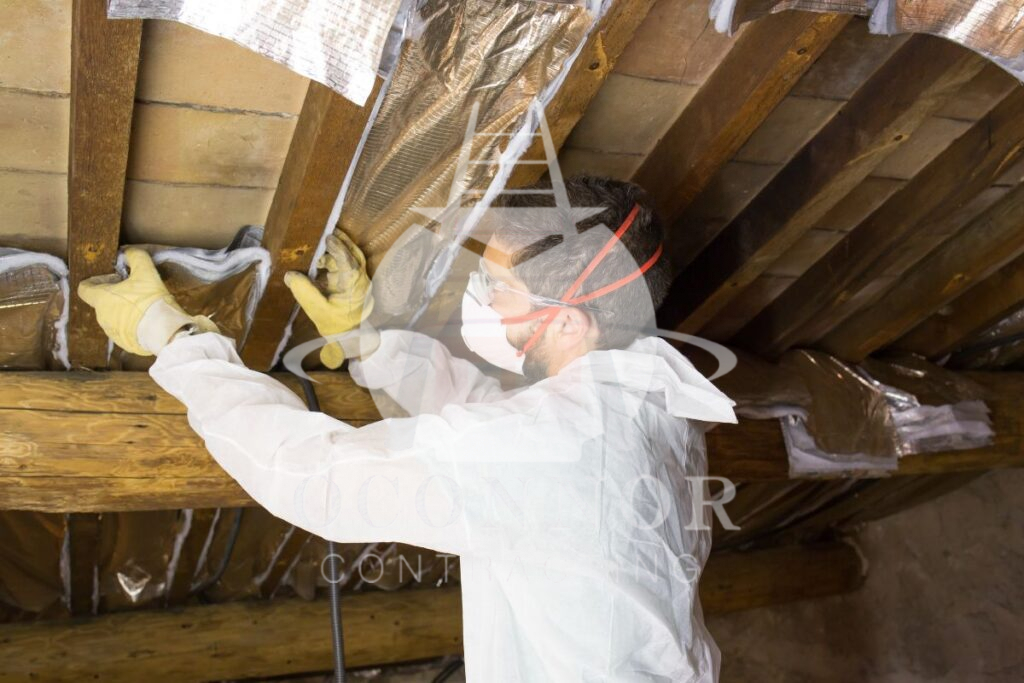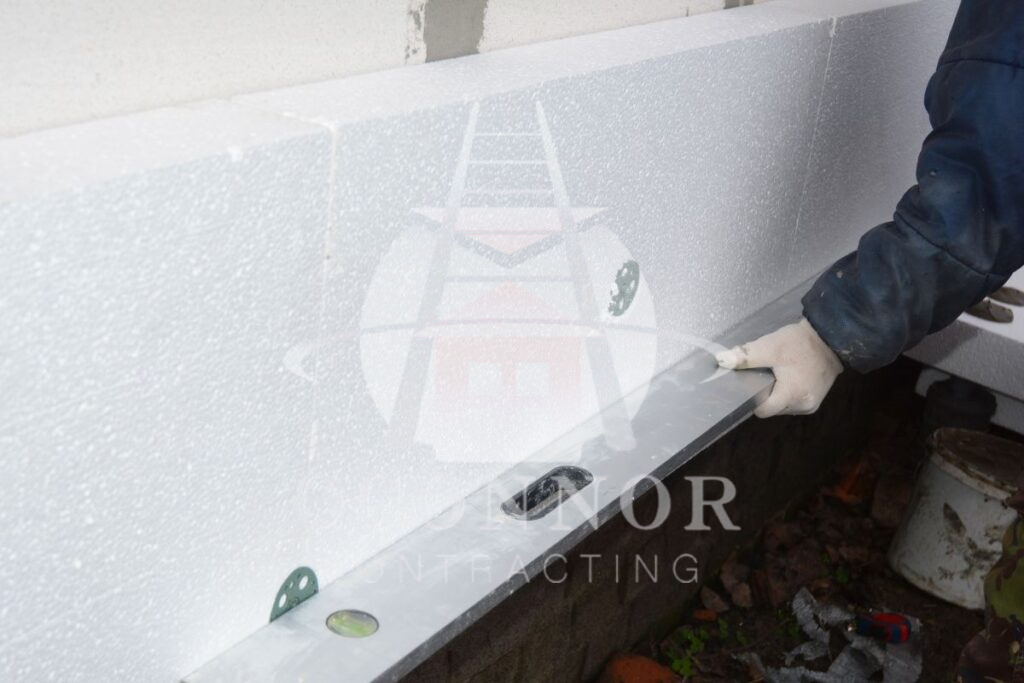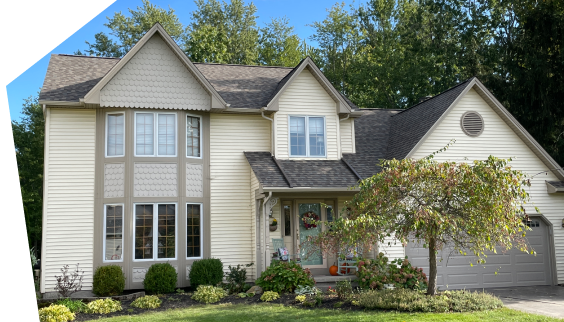Are you trying to keep your home cozy and energy-efficient? Roof insulation is the number one way to do this as it helps to control internal temperatures, saves you money on energy bills, and much more. With so many options out there, choosing the right insulation can be pretty tough, which is why we’re here today with this blog post. Keep reading to learn about the different types, factors to consider, and more.
What Are The Different Types Of Roof Insulation?
With so many different types of insulation available it can feel overwhelming to find the right one. Use the descriptions below to make a decision that benefits your home.
#1. Loose-Fill/Blown-In Insulation

Loose-fill, or blown-in insulation, is made of small pieces of fiber, foam, or other materials that can be blown into walls or attics with special equipment. The most common types are cellulose, fiberglass, and mineral wool.
This type of insulation is great for hard-to-reach areas and existing walls because it fits well into irregular spaces and provides a continuous barrier against heat loss. However, it might settle over time, making it less effective.
Pros:
- Efficiently fills gaps and conforms around obstructions
- Can be layered for added protection
Cons:
- Prone to settling and compression, which can reduce the R-value
- Time-consuming to install, especially for DIY projects
- Limited to attic application
R-Value: R-3.2 to R-3.8 per inch
Cost: $0.50 to $1.10 per square foot
#2. Spray Foam Insulation

Spray foam insulation is a two-part liquid that expands and hardens when applied, forming a seamless, airtight barrier along walls, ceilings, and roofs.
There are two main types:
- Open-cell spray foam: Lighter and cheaper, making it a cost-effective option for insulation.
- Closed-cell spray foam: Has a larger R-value and is better at resisting moisture, providing superior insulation and moisture resistance.
Although spray foam insulation is excellent for sealing air leaks, it usually costs more upfront than other types of insulation.
Pros:
- Provides an air barrier and insulation in one product
- Expands to fill cracks and gaps
- High R-value per inch
- Durable and long-lasting
Cons:
- More expensive than other insulation types
- Requires professional installation
- Potential health risks if not installed properly
R-Value: R-3.6 to R-3.9 per inch
Cost: $2 to $7.50 per square foot
#3. Fiberglass Batt Insulation

A popular and widely available type of insulation, fiberglass batt insulation comes in pre-cut, flexible fiberglass panels that can fit between wall studs, floor joists, and attic rafters. Fiberglass batts are quite easy to install and relatively inexpensive.
They provide good thermal and sound insulation and are resistant to moisture and fire. However, fiberglass may irritate the skin during installation, and it may not completely seal out air if it’s installed incorrectly.
Pros:
- Cost-effective and widely used
- Available in pre-cut rolls for easy installation
- Doesn’t create dust during installation
- Less prone to mold compared to cellulose
Cons:
- Can cause skin irritation during installation
- May not completely fill gaps and spaces
- Lower R-value per inch as compared to other insulation types
R-Value: R-2.9 to R-3.4 per inch
Cost: $.20 to $1.50 per square foot
#4. Extruded Polystyrene (XPS) Insulation
Extruded Polystyrene (XPS) insulation comes in solid panels or boards. It is one of the most common types of rigid foam insulation, known for its excellent thermal resistance and versatility.
XPS insulation offers a high R-value per inch, providing outstanding thermal resistance, and is often used for roofs, walls, and even foundation walls because it forms a continuous thermal barrier. XPS is also moisture-resistant and helps prevent air leaks, making it a reliable choice for various applications.
Pros:
- High R-value per inch
- Provides structural support
- Moisture-resistant
- Suitable for exterior walls and roofs
Cons:
- Can get expensive
- Difficult to install around obstructions
R-Value: R-4 and R-5 per inch
Cost: $0.60 and $1.50 per square foot
#5. Cellulose Insulation

Made from different recycled paper products, cellulose insulation is treated with fire-retardant chemicals. It is usually installed as a loose-fill material, either blown into place or poured into cavities.
This insulation has excellent thermal performance and can fill small gaps and crevices well. It is also more environmentally friendly than other insulation materials. However, it can settle over time and may require professional installation to ensure the attic area is properly covered and dense.
Pros:
- Made from recycled materials
- Treated to be fire-resistant, mold-resistant, and pest-resistant
- Higher R-value per inch compared to fiberglass
- Fewer health risks compared to fiberglass
Cons:
- Prone to settling and compression, reducing R-value over time
- Absorbs moisture easily, which can cause mold and rot
- Requires a vapor barrier
- Produces significant dust
R-Value: R-3.2 to 3.8 per inch
Cost: $0.60 to $1.80 per square foot
#6. Polyisocyanurate (Polyiso) Insulation

Next, polyisocyanurate, or polyiso, is a rigid foam insulation with a high R-value and excellent heat resistance.
Polyiso insulation comes in various thicknesses and is frequently coated with foil or other materials to improve its performance. It effectively reduces thermal transfer and creates a continuous thermal barrier. Furthermore, polyiso is moisture-resistant and long-lasting, making it a popular choice for many roofing and construction projects.
Pros:
- High R-value per inch
- Moisture-resistant
- Suitable for roofing applications
Cons:
- May not be suitable for all climates
- Can be damaged by UV exposure
R-Value: R-6.0 to R-6.5 per inch
Cost: $0.65 to $0.85 per square foot
#7. Mineral Wool Insulation

Mineral wool insulation, also called rock wool or slag wool, is made from natural stone or industrial slag. It comes in both batt and loose-fill forms and is known for its fire resistance and sound absorption.
It is very effective at providing thermal and acoustic insulation and is resistant to mold, mildew, and pests. It is often used in walls, attics, and other parts of the building. However, this type of insulation needs specialized equipment to be installed.
Pros:
- Fire-resistant
- Moisture-resistant
- Provides good soundproofing
- Suitable for exterior walls
Cons:
- More expensive than fiberglass
- Can be difficult to install
- May not completely fill gaps and spaces
R-Value: R-3.7 to R-4.3 per inch
Cost: $1.40 – $4 per square foot
#8. Reflective Foil Insulation

Reflective foil insulation, or also known as a radiant barrier, uses a highly reflective surface to reduce radiant heat transfer. It is usually made of a thin, lightweight material like aluminum foil, laminated to a substrate such as plastic or paper.
This insulation effectively reduces heat gain in hot climates by reflecting the sun’s radiant heat away from the building, but its effectiveness can be reduced by dust or other obstructions.
Pros:
- Reflects radiant heat
- Lightweight and easy to install
- Moisture-resistant
Cons:
- Not suitable for all climates
- May not provide adequate insulation on its own
R-Value: R-3 to R-17 per inch
Cost: $0.10 to $1.10 per square foot
#9. Expanded Polystyrene (EPS) Insulation

Another type of rigid foam insulation, Expanded Polystyrene (EPS) insulation, also known as beadboard or styrofoam, is made from small, expanded polystyrene beads. It is lightweight, durable, and provides excellent thermal performance.
EPS insulation is commonly used because it offers a continuous thermal barrier. It is also moisture-resistant and helps prevent air infiltration.
Pros:
- Cost-effective
- Moisture-resistant
- Provides structural support
- Suitable for exterior walls and roofs
Cons:
- Susceptible to damage from UV exposure and pests
- Can release harmful chemicals when burned
R-Value: R-3.9 to R-4.4 per inch
Cost: $0.40 to $.75 per square foot
Also Read: 7 Tips for Upgrading Your Poorly Insulated Attic Like a Pro
Best Insulation for Different Weather Scenarios
1. Cold Climates:
Choose closed-cell spray foam or rigid foam boards with fiberglass batts for high R-values and effective air-sealing to prevent heat loss and ice dams.
2. Hot Climates:
Opt for reflective insulation or radiant barriers combined with cellulose or fiberglass to reflect heat and maintain cooler attics, reducing the load on your air conditioning units.
3. Moisture Resistance:
Closed-cell spray foam works as a vapor barrier, preventing moisture buildup and mold growth in damp areas.
4. Eco-Friendliness:
Consider cellulose insulation from recycled paper or mineral wool with recycled content for environmentally friendly options.
Conclusion
Choosing the right roof insulation involves evaluating climate suitability, cost-effectiveness, and installation requirements. Consult with an insulation contractor to tailor your decision to your home or building’s specific needs.
Experience improved home comfort with OConnor Contracting’s expert roofing services. Our focus on quality installation and cost-effective solutions ensures optimal insulation tailored to your climate. Contact us today at (716) 600-7663.


